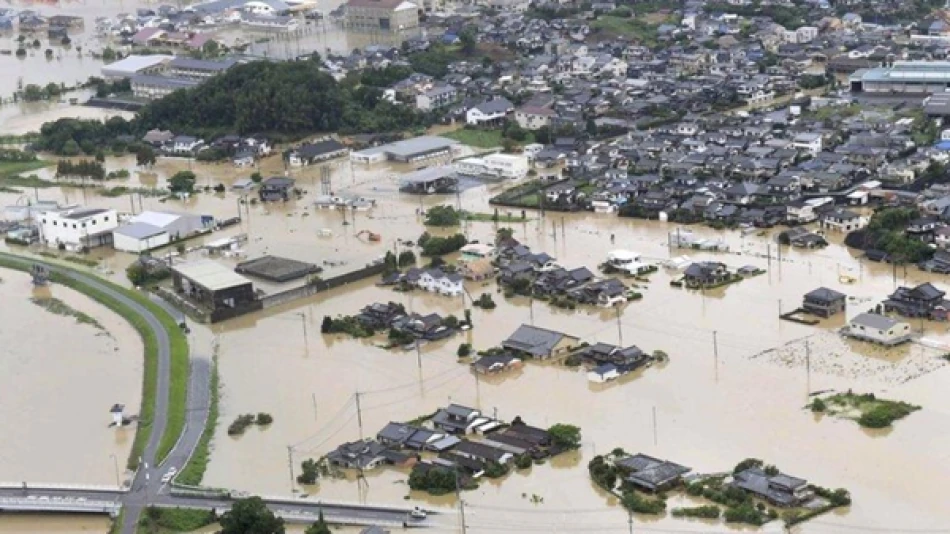
Heavy Rains Batter Southern Japan: Weather Chaos Unfolds
Japan's Kyushu Island Battered by Extreme Rainfall as Climate Disasters Intensify
Torrential rains hammered Japan's southern Kyushu island on Friday, triggering deadly mudslides and widespread flooding that forced over 360,000 residents into emergency shelters. The disaster underscores Japan's growing vulnerability to extreme weather events, as the archipelago nation faces increasingly frequent and severe precipitation linked to shifting climate patterns in the Pacific region.
Immediate Impact: Lives at Risk and Infrastructure Crippled
The most dramatic incident occurred in Aira City, Kagoshima Prefecture, where a mudslide buried a residential home, trapping two people who were later rescued alive and hospitalized. The Japan Fire and Disaster Management Agency issued its highest-level emergency warnings across parts of Kagoshima and neighboring Miyazaki prefectures, affecting more than 360,000 residents.
Television footage revealed the scale of destruction: muddy torrents surging through rivers and knee-deep floodwater inundating shopping centers in Kirishima City. The deluge paralyzed local transportation networks, halting train and bus services while forcing the cancellation of dozens of flights to and from Kagoshima.
Government Response: Emergency Task Force Mobilized
Prime Minister Shigeru Ishiba quickly established an emergency response task force, pledging comprehensive government support. "The government will do everything to protect your lives and safety," Ishiba declared, signaling the administration's recognition of the crisis's severity.
The Japan Meteorological Agency attributed the extreme weather to a low-pressure system and warned that heavy rainfall and thunderstorms would persist through Friday across Kyushu.
Japan's Climate Challenge: A Pattern of Intensifying Disasters
This latest disaster fits a troubling pattern for Japan, which has experienced increasingly severe weather events in recent years. The country's unique geography—mountainous terrain surrounded by warming ocean waters—creates ideal conditions for extreme precipitation events during certain atmospheric patterns.
Japan's rainy season, known as tsuyu, has become more unpredictable and intense, with meteorologists noting that traditional seasonal patterns are shifting. The phenomenon mirrors similar trends across East Asia, where countries like South Korea and parts of China have also experienced more frequent extreme rainfall events.
Economic and Infrastructure Implications
Beyond immediate human safety concerns, such disasters carry significant economic costs for Japan. Transportation disruptions affect supply chains, particularly important given Kyushu's role in Japan's agricultural sector and its proximity to major shipping routes to mainland Asia.
The repeated need for large-scale evacuations and emergency responses also strains municipal budgets and highlights the ongoing challenge of maintaining aging infrastructure in the face of more frequent extreme weather. Japan has invested heavily in disaster preparedness systems, but events like Friday's flooding test the limits of even well-prepared communities.
Regional Context: Asia's Weather Extremes
Japan's experience reflects broader regional trends across the Asia-Pacific, where changing precipitation patterns have created new challenges for disaster management. Unlike some Southeast Asian nations that face primarily typhoon-related flooding, Japan must contend with multiple weather systems that can produce extreme rainfall even outside traditional storm seasons.
The country's advanced early warning systems and evacuation procedures likely prevented more serious casualties, demonstrating the value of robust disaster preparedness infrastructure—a model that other nations in the region continue to study and adapt.
 Layla Al Mansoori
Layla Al Mansoori







